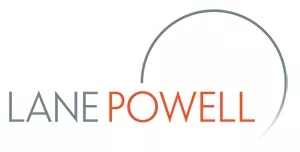Updated on April 22, 2021
Employees may be eligible for additional paid leave for COVID-19 reasons, but only if their employer voluntarily agrees to extend such leave granted under the American Rescue Plan Act of 2021 (Act), signed into law by President Biden on March 11. This Act further extends the paid leave that first became available under the Families First Coronavirus Response Act (FFCRA) of 2020. This leave was extended through March 31 and made voluntary by the COVID-related Tax Relief Act of 2020 (Tax Relief Act), enacted in December 2020. The American Rescue Plan further extends the ability of employers to offer this leave and codifies the related tax credits for employers that offer paid sick and family leave to their employees.
The FFCRA required all private employers with fewer than 500 employees and all public employers to provide 10 days of paid sick leave and up to 10 weeks of paid family leave to employees under certain pandemic-related circumstances. Mandatory emergency paid sick leave (EPSL) and emergency family and medical leave (EFMLA) expired on December 31, 2020. The Tax Relief Act extended eligibility for EPSL and EFMLA leave through March 31, 2021, with an accompanying tax credit for private employers who voluntarily agreed to do so. The American Rescue Plan (1) extends the availability of the credits to wages paid from April 1, 2021 through September 30, 2021 and (2) resets the cap for these wages.
Accordingly, private employers with fewer than 500 employees can receive a 100 percent tax credit for up to 10 days of paid sick leave, capped at $511 per day if the leave is used for one of the expanded eligibility reasons for sick leave discussed below or for absences related to COVID-19 for the employee. The leave is capped at $200 per day if the paid sick leave is for the remaining permissible reasons under FFCRA, including absences to care for another individual for COVID-19 related reasons. In addition, these employers can also receive a 100 percent tax credit for up to 12 weeks of emergency paid family leave, capped at $200 per day and $12,000 in the aggregate.
The American Rescue Plan also made other important changes to the landscape of COVID-related leave:
- The Act extends the tax credits to state and local public
employers. The IRS has issued a fact sheet stating that an eligible employer
includes a governmental employer other than the federal
government.
- Eligible reasons for taking EPSL or EFMLA leave have expanded
to include:
- When an employee is seeking or awaiting the results of a test
for or a diagnosis of COVID-19; and
- When an employee is obtaining the COVID-19 vaccine; and
- When an employee is recovering from any injury or condition
related to immunization.
- Additionally, emergency family leave can now be taken for all
of the reasons that an employee might take emergency sick leave
under the FFCRA, including:
- becoming subject to quarantine or isolation order;
- being advised by a health care provider to quarantine;
- experiencing COVID-19 symptoms and seeking a medical
diagnosis;
- caring for someone subject to a COVID-19 quarantine or advised
to quarantine;
- caring for a son/daughter whose school/care provider is closed
or unavailable due to COVID-19; or
- experiencing any other substantially similar condition
specified by the Secretary of the Department of Health and Human
Services.
- becoming subject to quarantine or isolation order;
- When an employee is seeking or awaiting the results of a test
for or a diagnosis of COVID-19; and
- And finally, the first two weeks of EFMLA are no longer unpaid, allowing employees to qualify for paid leave for all 12 weeks of emergency family leave, subject to a corresponding tax credit.
Employers who choose to provide, or continue to provide, paid sick leave essentially hit a "reset button" on March 31, 2021. Beginning April 1, 2021, employees who meet the COVID-related eligibility reasons would be able to take an additional 10 days of sick leave. Eligible employees would also be allowed to use any remaining available EFML if their employer voluntarily agrees to provide FFCRA leave. While some language in the American Rescue Plan Act could be read to grant an additional 12 weeks of EFML beginning April 1, previous guidance by the Department of Labor stated that eligibility for EFML depended upon how much FMLA leave an employee had already taken during the 12-month measuring period that an employer adopted for FMLA leave. The Department of Labor has not yet issued guidance on the American Rescue Plan, but such guidance would obviously be helpful for employers who choose to grant leave on April 1.
What Should Employers Do Now?
- Decide whether to voluntarily adopt additional FFCRA
leave: Employers may decide whether or not to adopt the
new FFCRA leave granted under the American Rescue Plan. Whether to
do so may depend on their workforce and how this leave will
coordinate with their existing leave policies and other state or
local sick leave requirements. For example, Washington state's
paid sick leave law allows non-exempt employees to accrue one hour
of sick leave for every hour worked, and up to 40 hours may be
carried over from the prior benefit year. Employees who are working
from home may have large accruals in their leave banks,
particularly if the employer has adopted a PTO plan. An employer
who voluntarily adopts FFCRA leave under the American Rescue Plan
would be required to grant 10 additional days of COVID-related sick
leave beginning April 1 that may be used until September 30, 2021,
on top of other available paid leave.
- Update policies: If employers plan to grant
this paid FFCRA leave to employees, they should update their leave
policies and forms to reflect the additional qualifying reasons for
paid sick and family leave, working with their legal counsel as
needed.
- Develop a tracking system: Employees may be
eligible for leave under multiple policies and laws. Employees
remain entitled to choose which type of leave to use. Employers who
decide to offer this paid leave should continue to maintain
documentation to track paid leave that may be eligible for the
federal tax credit. The federal tax credit is only available for
leave used for the FFCRA reasons enumerated in American Rescue Plan
Act.
- Watch out for the new non-discrimination
provision: Employers will not be able to claim the tax
credit if they discriminate in favor of highly compensated
employees, full-time employees, or on the basis of employment
tenure (seniority) when granting leave. Employers who voluntarily
agree to provide FFCRA leave under the American Rescue Act should
grant leave across the board.
- Monitor regulatory guidance: The U.S. Department of Labor may issue regulations implementing these new provisions. Employers should be on the lookout for these regulations and additional guidance in the form of Frequently Asked Questions. The IRS has created a fact sheet to provide guidance to employers on how to claim the tax credit for the expanded FFCRA leave — including vaccination leave — on their quarterly tax filings. The tax credits are available to eligible employers who offer paid sick or family leave from April 1, 2021 through September 30, 2021. As a reminder, paid leave and tax credits are available to permit employees who take time off to receive a vaccine, as well as to recover from any adverse effects from a vaccine.
Lane Powell's team of employment attorneys is here to help you develop and implement the strategies that supports your business and your employees. For more information, consult Lane Powell's COVID-19 Resource Center or contact Katheryn Bradley or Hannah Ard. For tax questions relating to the American Rescue Plan, contact Eric Kodesch.
Originally published March 16, 2021
The content of this article is intended to provide a general guide to the subject matter. Specialist advice should be sought about your specific circumstances.



